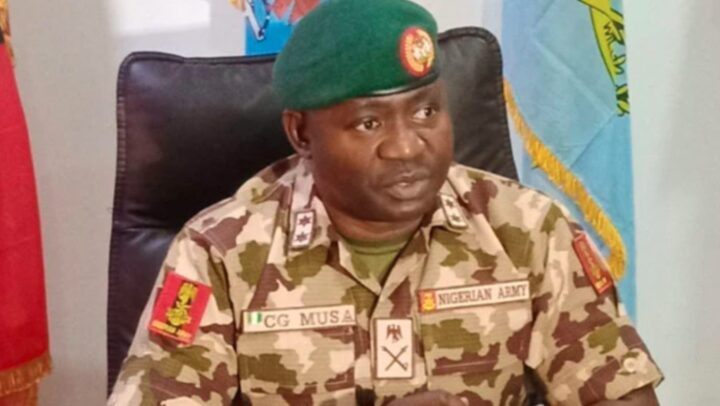What We Know About Israel’s War With Hamas
Thousands have died in the ensuing war that erupted as Israel responded with its massive bombardment of the Palestinian enclave. Israel is relentlessly pounding Hamas targets in Gaza, five days after the Islamist fighters shot dead civilians in their homes and on the streets in an unprecedented assault on Israeli soil. Thousands have died in the ensuing war that erupted as Israel responded with its massive bombardment of the Palestinian enclave. Israel has since said it has secured border areas along Gaza that had been taken by Hamas militants in Saturday’s assault, and has massed its military forces around the besieged Palestinian enclave in what appears to be preparation for a possible ground invasion. This is what we know about the conflict so far: How the assault unfolded Hundreds of Hamas militants attacked Israel from around 6:30 am (0330 GMT) on Saturday, the Jewish holiday of Simchat Torah, in an assault that came 50 years and a day after the outbreak of the 1973 Arab-Israeli war. The Iran-backed Islamists fired thousands of rockets from Gaza into Israel and used explosives and bulldozers to break through the security fence around the blockaded Palestinian enclave. Using motorbikes, pickup trucks, motorised gliders and speed boats, the militants streamed into Israel, targeting cities including Ashkelon, Ofakim and Sderot. The gunmen fired on hundreds of young Israelis and foreigners at a music festival near Kibbutz Reim, close to Gaza. Some 270 people died at the site alone. Hamas also took around 150 hostages, Israel said. They include at least 11 Thais, two Mexicans and an unknown number of Americans and Germans. How Israel is responding Israel declared war on Hamas on Sunday and has since carried out thousands of air strikes inside the densely populated territory of 2.3 million people. The bombing campaign has flattened more than 1,000 homes, while 560 more have been so severely damaged they are uninhabitable, UN humanitarian agency OCHA said, citing Palestinian authorities. Defence Minister Yoav Gallant on Monday ordered a “complete siege” of Gaza, meaning “no electricity, no food, no water, no gas”, in a move decried by the United Nations as a possible violation of international law. The military has massed tens of thousands of troops and heavy armour near Gaza, and called up 300,000 reservists for a campaign it has dubbed “Swords of Iron”. Prime Minister Benjamin Netanyahu has warned that his country’s military campaign was only the start of a sustained war, and has vowed to reduce to “rubble” Hamas’s hideouts in Gaza. By Tuesday evening, the United Nations said that the air strikes had forced more than 260,000 people to flee their homes in the impoverished territory hemmed in by an Israeli-Egyptian blockade for more than 15 years. Three Israeli strikes have also hit the Rafah crossing with Egypt, the only entry point into Gaza not controlled by Israel. The Israeli military meanwhile said Tuesday that it had largely reclaimed the embattled south and the border around Gaza, and dislodged holdout Hamas fighters from more than a dozen towns and kibbutzim. But late Tuesday in the southern Israeli city of Ashkelon, troops backed by helicopters and drones exchanged fire with several militants, leaving three fighters dead, the army said. And a rocket from Gaza struck a hospital in Ashkelon on Wednesday. Israel also faced the threat of a multi-front war after days of back and forth shelling with the Iran-backed Shiite militant group Hezbollah on the northern border with Lebanon. There was also an exchange of fire between Israel and forces in Syria on Tuesday, after Israel’s military said munitions were fired towards the Golan Heights it has occupied since 1967. Death toll mounts In total, the war has claimed more than 3,900 lives of Israeli and Palestinian civilians, soldiers and combatants. Israel says Hamas gunmen have killed more than 1,200 people and wounded over 2,700 in Israeli cities, towns and kibbutz communities. In the kibbutz of Beeri alone, Hamas gunmen killed more than 100 people, a volunteer who helped recover the bodies told AFP. The Israeli military said 169 Israeli soldiers have been killed in the fighting and the bodies of 1,500 Islamist militants have been found in recaptured areas. Eighteen Thais, 14 US citizens and 10 Nepalis are among foreigners from more than a dozen countries killed. In Gaza, health officials said 1,055 people had been killed and more than 5,000 wounded. Hamas’s armed wing, the Ezzedine al-Qassam Brigades, on Monday said Israeli air strikes on Gaza had killed “four of the enemy’s prisoners”, in a claim that could not be independently verified. Eight Palestinian journalists have been killed in Israeli air strikes, according to media unions and officials. Unrest has also broken out in the occupied West Bank, where 15 Palestinians have died since Saturday. What Hamas says about the attack Hamas said it fired 5,000 rockets in an offensive it branded “Operation Al-Aqsa Flood”. On Monday it threatened to start killing hostages every time Israel launches a strike on a civilian target without warning. It has ruled out negotiating a prisoner swap with Israel as “the military operation is still ongoing”. Its chief Ismail Haniyeh vowed Saturday to press ahead with “the battle to liberate our land and our prisoners languishing in occupation prisons”. Hamas has called on “resistance fighters in the West Bank” as well as in “Arab and Islamic nations” to join the battle. How the world has reacted The United States has vowed “rock solid and unwavering” support for Israel, with President Joe Biden condemning the attacks by Hamas as “sheer evil” and so far showing no sign of calling for restraint by its key ally. Biden said Washington was “surging assistance” for Israel, including missiles for its Iron Dome interceptor system, while the largest US aircraft carrier has been ordered to move closer to Israel. Biden said he was ready to move “additional assets” if needed to deter Israel’s adversaries. Washington is also deploying hostage experts to Israel to














